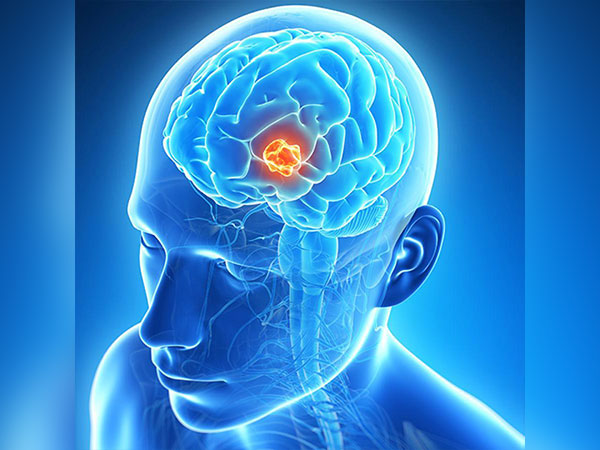Cancer has affected the lives of the majority of Americans. According to a CBS News poll, 54% of Americans have either been diagnosed with cancer themselves, or have a family member who has been diagnosed.
Brain cancer is the most common type of cancer among children under 14 and the third-most common type of cancer among youth and younger adults ages 15 to 39. Every year, more than 24,000 people are diagnosed with a malignant brain tumor; right now, around 700,000 people in the U.S. are living with this type of cancer.
These numbers are concerning, but some emerging brain cancer treatment innovations may provide hope for the future.
5-ALA – the Pink Drink
Also known as “the pink drink,” 5-ALA (5-aminolevulinic acid) is an amino acid that helps surgeons better identify tumor cells in the tissue surrounding the tumor itself. The patient ingests 5-ALA orally before surgery, and this causes their tumor cells to appear fluorescent under ultraviolet light. As a result, surgeons are better able to remove cancerous tissue while keeping healthy tissue intact.
5-ALA is not a cancer treatment by itself, but it is making treating cancer easier for surgeons. Research shows that surgeons can remove the entire tumor 70.5% of the time when they use 5-ALA, compared to just 30% of the time without the use of 5-ALA. Currently, 5-ALA has been proven beneficial for surgical treatment of adults with certain cancers of the brain, namely high-grade gliomas.
Patient-Derived Xenograft (PDX) Models or “Avatars”
Patient-derived xenograft (PDX) models, or avatars, are a way of studying a patient’s tumor and what treatments might be effective for that particular patient. Doctors remove part of the tumor and transplant the tumor into a mouse. The mouse can then be used as a testing ground for researchers, who can try out several different drug combinations to determine which would be the most effective.
PDX research is still in the early stages, but there is reason to be optimistic that this method could result in more effective, personalized brain cancer treatments in the future. According to the British Journal of Cancer, research shows that PDX models can accurately replicate tumor growth, the diversity of tumor cells, and tumor progression, including metastatic potential. These models are part of a growing trend towards individualized cancer treatments.
Immunotherapy – Using the Immune System to Fight Cancer
Cancer is difficult to treat in large part because it slips past our immune system and evades detection. Brain tumor cells are especially adept at circumventing the body’s natural defenses. Immunotherapy methods operate with the general goal of conditioning the immune system, helping it fight cancer cells the way it does other types of disease.
Immunotherapy has already proved effective for other types of cancer, and immunotherapy for brain cancer is currently being researched. Some of the common techniques used in immunotherapy for cancer patients include:
Vaccine Creation
Doctors can create vaccines by combining immune system cells with a sample of the patient’s tumor tissue. This can help teach the body how to fight the tumor.
CAR T-Cell Therapy
Short for chimeric antigen receptor T-cell therapy, this method is popular in the treatment of blood cancers. Additionally, it is being researched as a treatment for brain cancer and other cancers. T-cells are removed from the patient and altered in a laboratory to become better able to fight cancer cells. Researchers then grow large amounts of these altered cells and then reintroduce them to the patient’s body through infusion.
Using Viruses to Deliver Immunotherapy Drugs
The brain is one of the most difficult organs to deliver drugs to. However, immunotherapy researchers are currently testing how viruses can be used to deliver immunotherapy drugs to brain cancer patients. While the immune system has trouble fighting cancer cells, it is much more apt at virus detection. A virus can used as a means to “wake up” the immune system, so that it can better fight cancer cells.
Checkpoint Inhibitors
Checkpoint inhibitors are used to fight tumors by manipulating the inflammatory response of the body.
Immune checkpoints are a natural part of our immune system that work to modulate the immune response and keep it from attacking healthy cells. This modulating response kicks in when proteins on T cells bind to corresponding proteins on other cells—including some cancer cells. The binding of these two proteins essentially tells T cells to back off. A checkpoint inhibitor blocks checkpoint proteins from binding with other proteins, prompting T cells to attack cancer cells.
Laser Interstitial Thermal Therapy (LITT)
Laser Interstitial Thermal Therapy (LITT) is a promising new brain cancer treatment that uses lasers to remove tumors. The surgeon drills a pencil-sized hole into the patient’s skull and then shines a laser through it, using heat to destroy the tumor. While there is much hope for LITT, there are still questions surrounding its use, and research is ongoing. Researchers are working on the following potential problems with LITT:
- Though considered minimally invasive, LITT often causes inflammation and swelling, putting the patient at risk for neurological problems that can occasionally be permanent.
- Under certain circumstances, the laser probe can overheat and cause damage. One of the manufacturers of an LITT system issued a recall due to this problem in 2017.
- There’s a relative lack of data on LTT compared to established surgical methods, such as craniotomies.
However, as research continues, the lack of data issue will eventually be solved. If this and the other issues above are properly resolved, there is plenty of reason to be hopeful that LITT can become an effective brain cancer treatment method.

